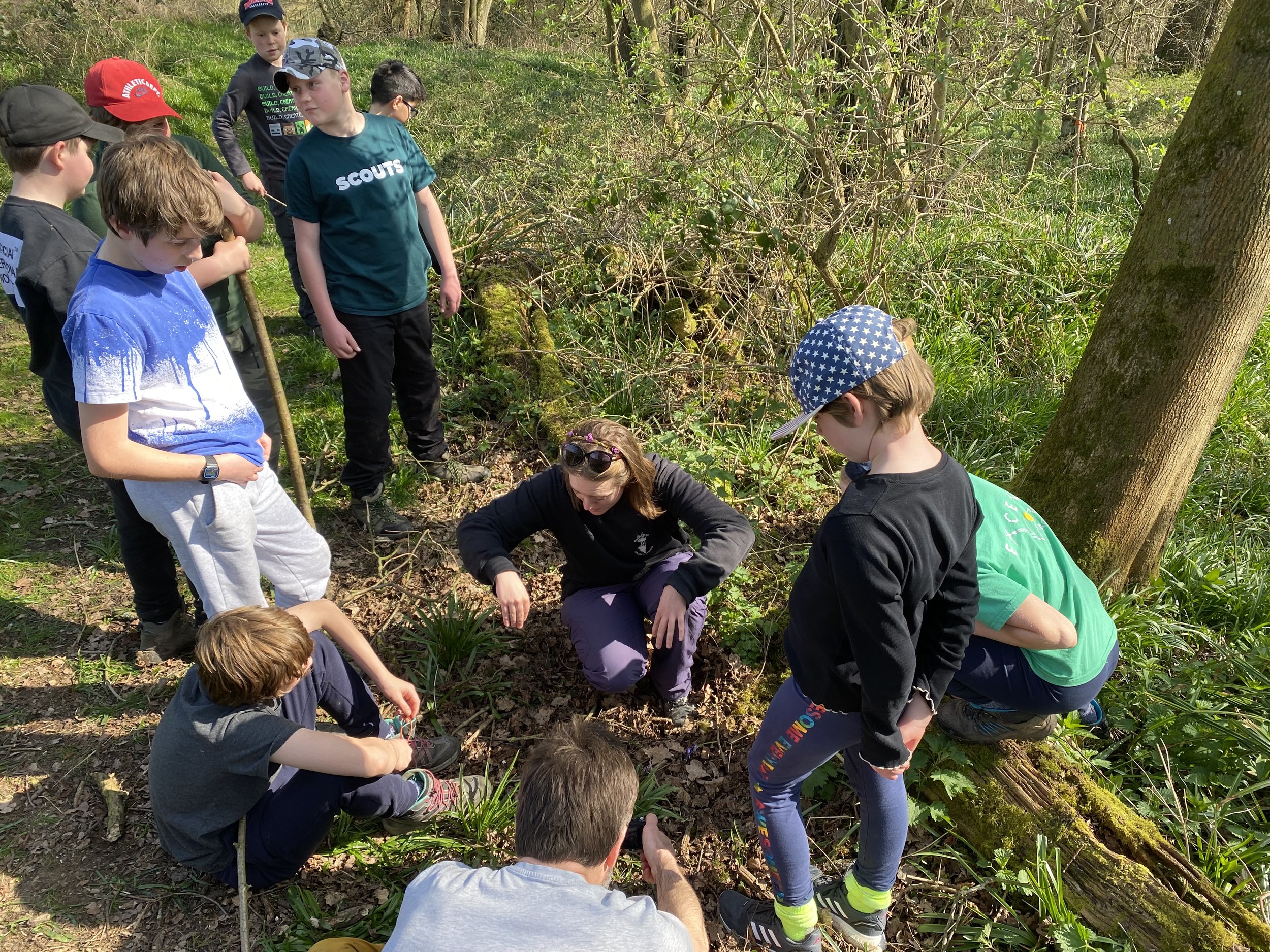I’m always looking for new ways to engage young people with the natural world, and with solutions to climate change. When we were approached by Freeland Scouts and learned about the scout Forestry and Naturalist badges this seemed to be a fantastic new opportunity. The badge content is really well designed and creates the opportunity for a varied and fun day while learning about nature. This is what they have to do to gain their badges.
Scouts Forester Activity Badge
Discover how to manage and identify trees – and help preserve our woodland.
Identify at least eight common types of tree that grow in your area, including both deciduous and coniferous.
Find out how to identify trees using identification keys.
Prepare the soil and successfully transplant a young tree.
Find out how both natural woodland and commercial forests are managed.
Show how to select, use and care for forestry equipment, and know the safety issues involved.
Show how to fell and trim out a tree or lay a hedge.
Scouts Naturalist Activity Badge
Become a great Naturalist and play your part in preserving the natural world as a whole.
With appropriate permission, spend at least one day at one of these locations and investigate the wildlife and plants found there. We are covering woodland and hedgerow
Tell a knowledgeable adult what you discovered. Show them your field notes, sketches, photographs or maps.
Find out more about a plant, animal or particular wildlife from your chosen location.
Discuss what you found out, giving sources for information from places like museums, field guides or the internet.
Discuss how human activities or land management can affect wildlife.
What we did
Our experts for the day were Nigel Fisher, Conservator of Wytham Woods; outdoor educator, Charles Montier; and ecologist Julia Haynes. We tested out our activities on Freeland Scouts. 19 of them came to Wytham Woods with their leaders on a beautiful March day. Our base was Bean Wood, by the old cottage in the Woods that used to be used by scouts and guides in the 1920s.
The group was divided into two and each did one activity before lunch and one after. With Nigel, they played tree games, learned about trees, learned how to use saws and loppers safely, and did some fantastic coppicing work, ably helped by their scout leaders.
With Charles and Julia they hunted for signs of nature (including emerging bluebells, fox poo, blossom, hawthorn leaves, celendine, primroses, chiffchaffs and great tits), made crayon rubbings to record their tree leaf ID, and got some handy outdoor survival tips from Charles. Then everyone came together to plant a tree.
We think we managed to tick off all the requirements for the two badges in one day, but we also hope that they will come back and see the Woods at other times of the year. Everybody had a fantastic time, and we are hoping that other groups of scouts to follow these Freeland scout pioneers.
Kim - Youth Educator in Residence at Wytham Woods






